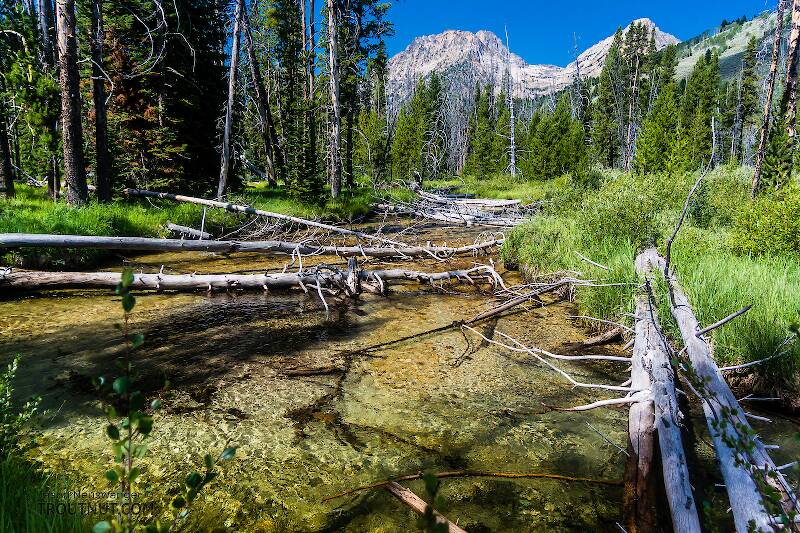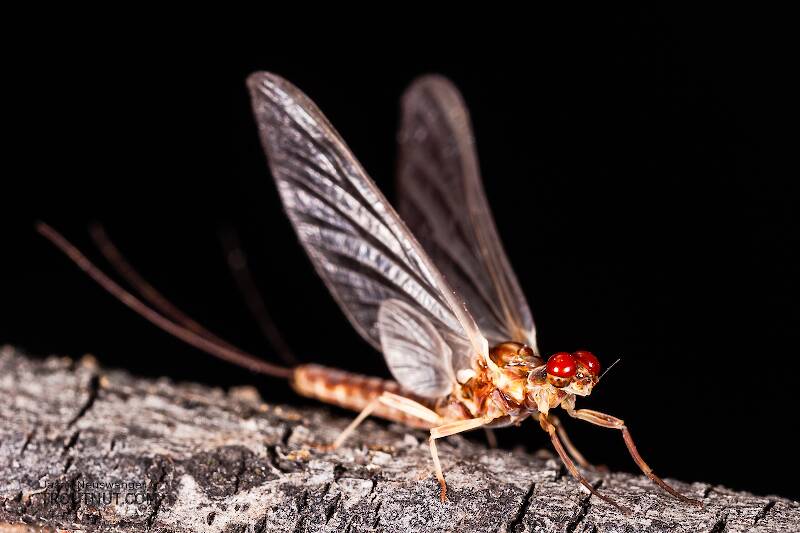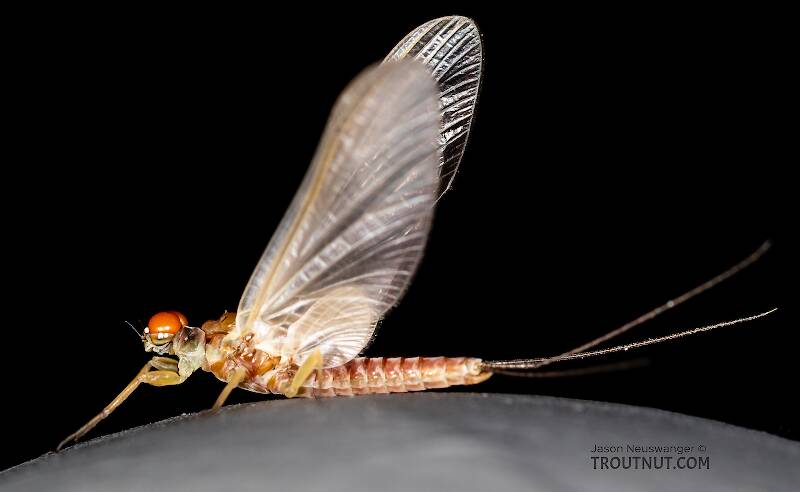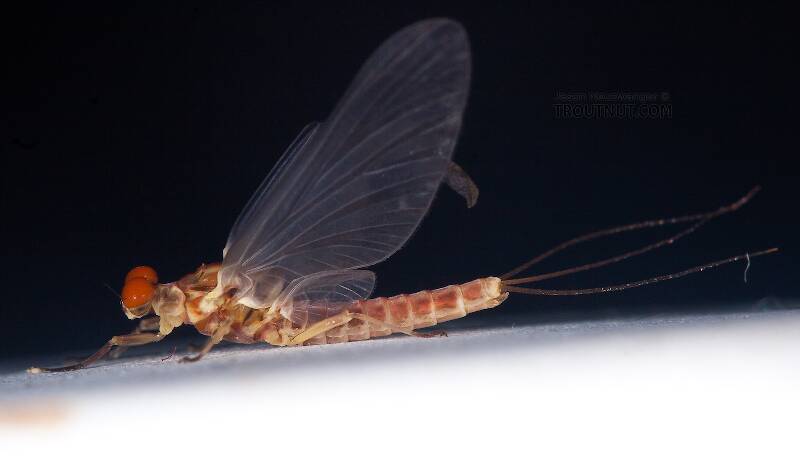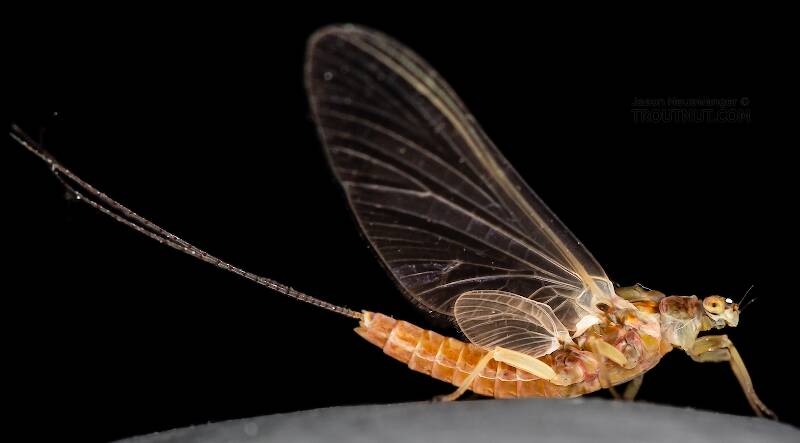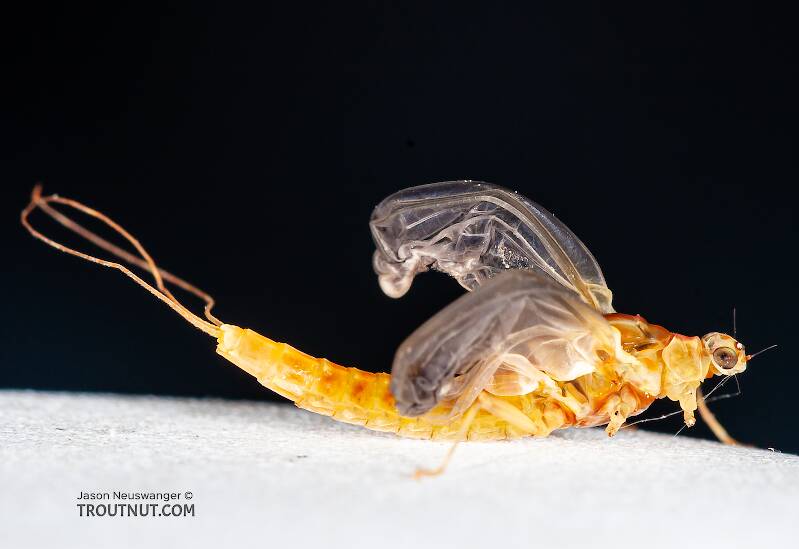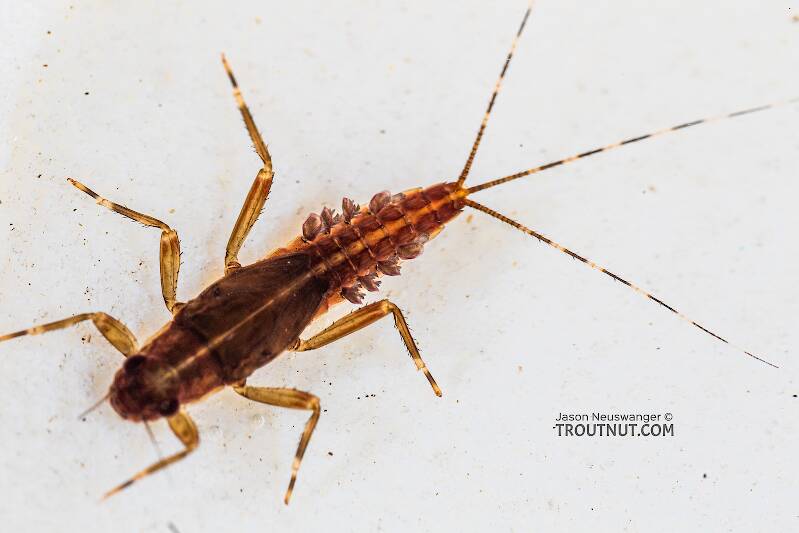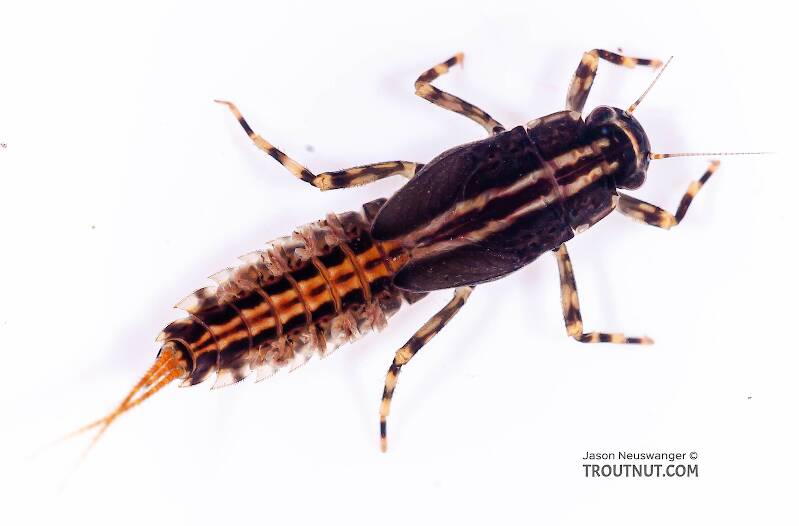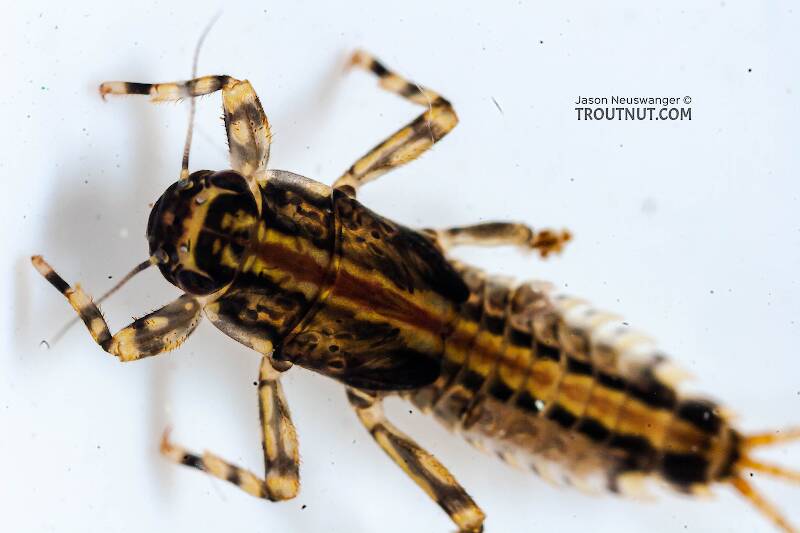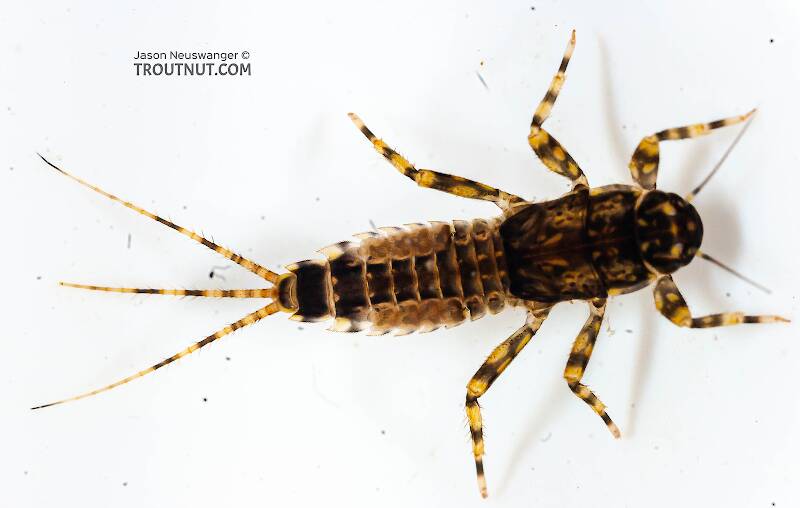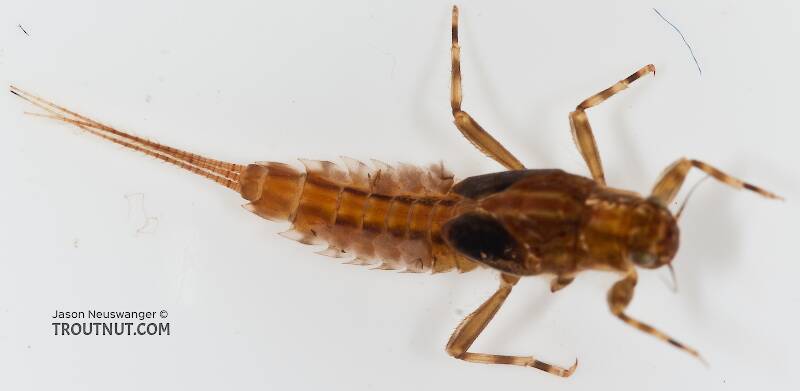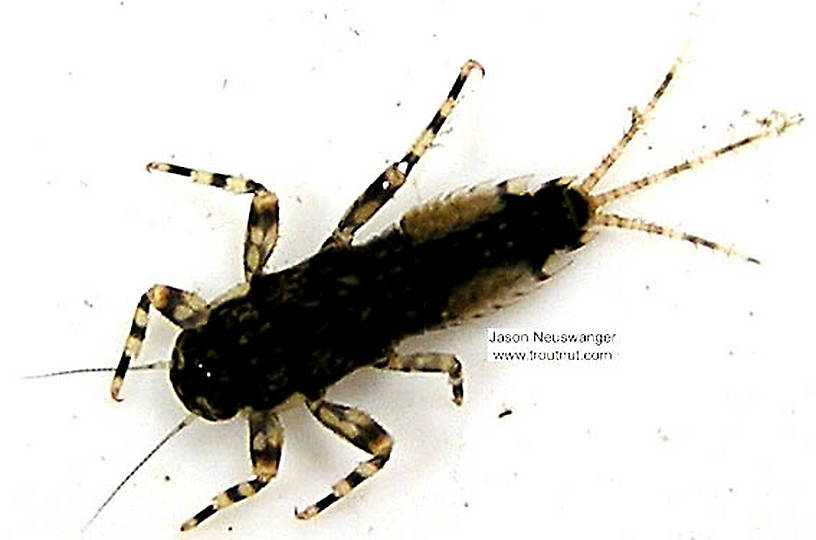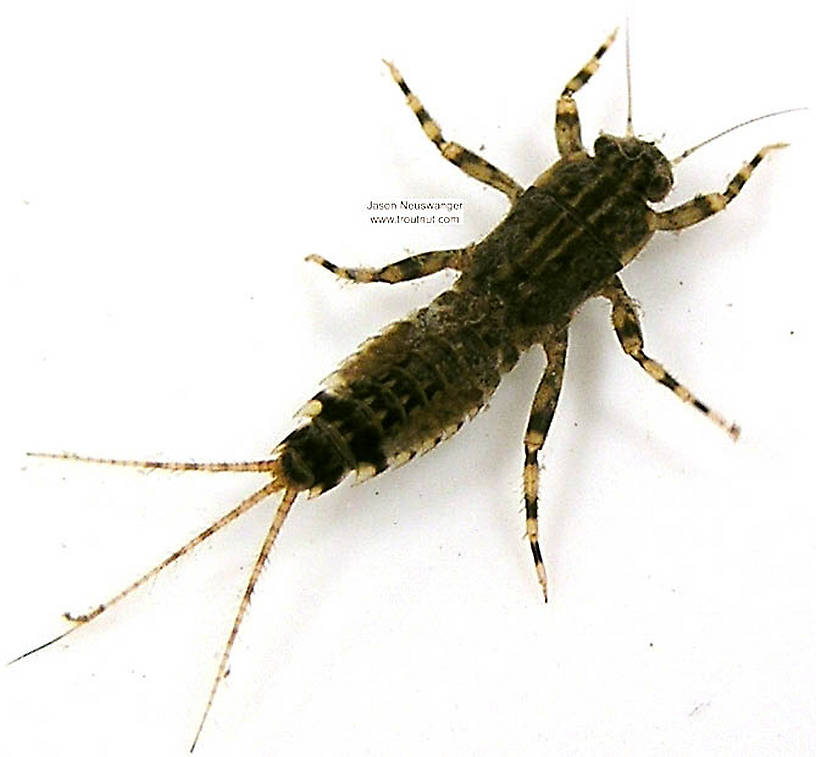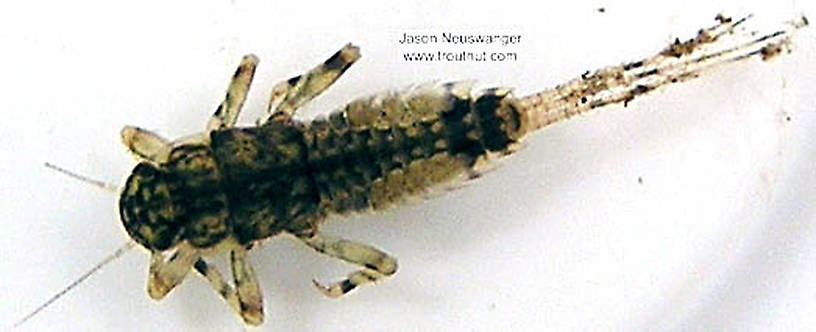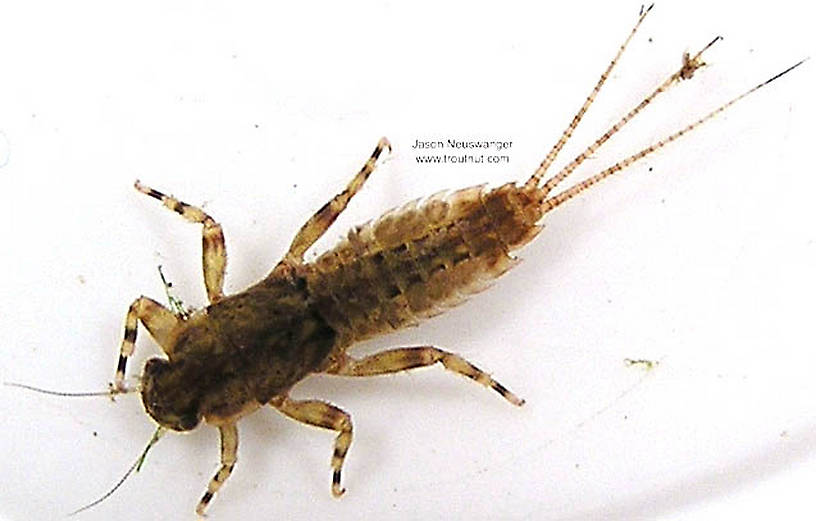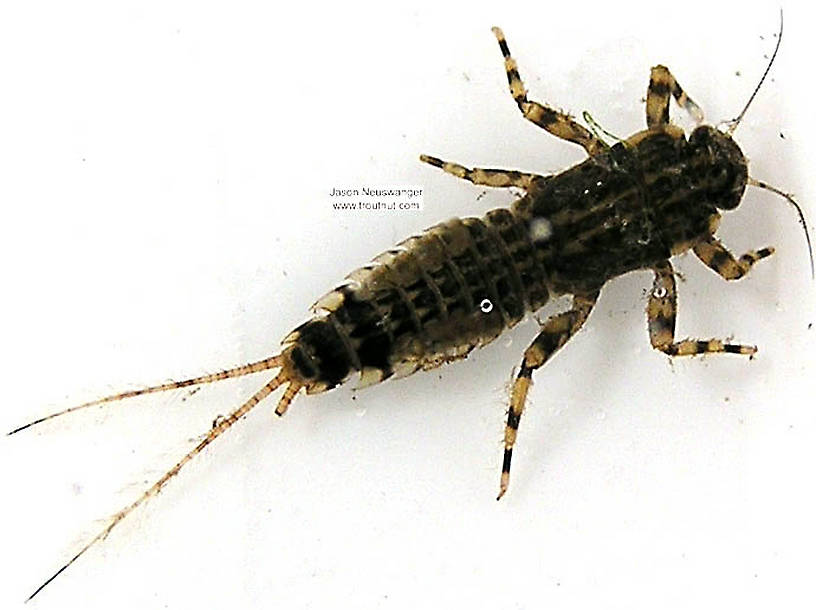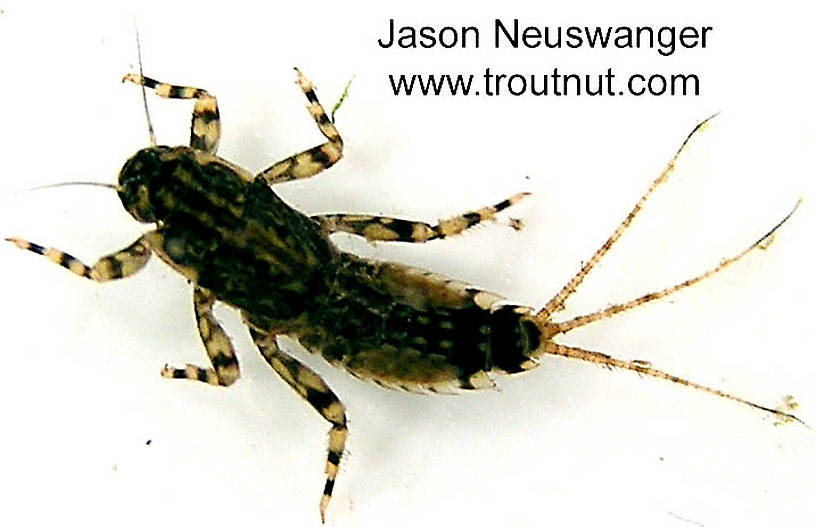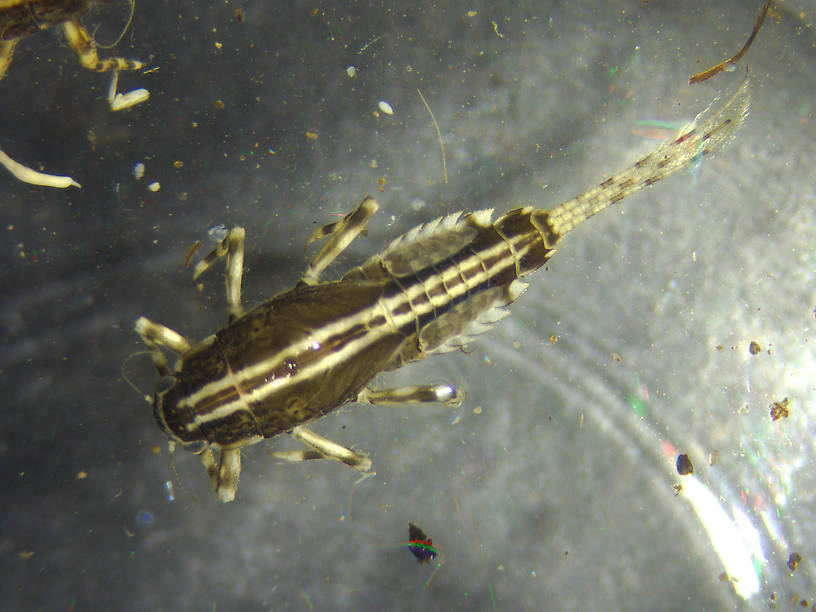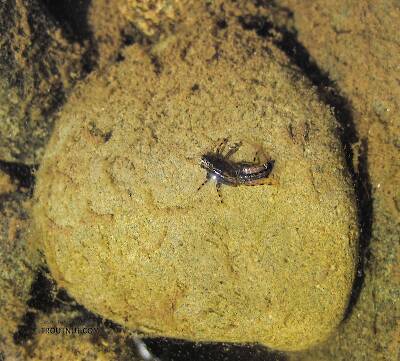
Blue-winged Olives
Baetis
Tiny Baetis mayflies are perhaps the most commonly encountered and imitated by anglers on all American trout streams due to their great abundance, widespread distribution, and trout-friendly emergence habits.

Mayfly Species Ephemerella aurivillii
Where & when
This species was first described in Europe, and has also been found in Asia and North America. I have collected them in Alaska and New York, and probably Wisconsin, although the ID on the Wisconsin specimens is less certain.I found ready-to-hatch, definitive Ephemerella aurivillii nymphs near Fairbanks, Alaska, in mid-July. However, because this species is found across such a large geographic range, the emergence timing probably varies widely. They may go unnoticed in the East due to overlaps in timing with more abundant Ephemerella species.
In 5 records from GBIF, adults of this species have been collected during May (60%), July (20%), and June (20%).
In 169 records from GBIF, this species has been collected at elevations ranging from 16 to 2805 ft, with an average (median) of 594 ft.
Species Range
Physical description
Most physical descriptions on Troutnut are direct or slightly edited quotes from the original scientific sources describing or updating the species, although there may be errors in copying them to this website. Such descriptions aren't always definitive, because species often turn out to be more variable than the original describers observed. In some cases, only a single specimen was described! However, they are useful starting points.
Male Spinner
Wing length: 11 mm
A species of the Ephemerella needhami group; venation pale brown; spines present on the penes. Head brown. Thorax deep reddish brown; lateral margins of the mesonotal scutellum blackish brown; three small pale spots anterior to the scutellum. Pleura with yellowish interspaces. Fore leg dark yellowish brown, slightly tinged with smoky; minute spines on the fore tibia. Middle and hind legs deep yellow; a small dark blotch may be present at the apex of the femur; claw, and shading on the distal joint of the tarsus, reddish. Wings hyaline, the longitudinal veins pale brown, deepest on the costal margin of the fore wing. Stigmatic area opaque whitish, the cross veins anastomosed.
Posterior two-thirds of each abdominal tergite deep smoky, brown; anterior portions paler; apical tergites reddish brown. Traces of a dark median line, partially geminate, and of indistinct darker lateral streaks may be present. Pale yellowish brown ventrally, the basal sternites faintly suffused with purplish. Ganglionic areas pale. Traces of the usual submedian oblique dashes at the anterior margin, and of the small dark dot central dots. Genitalia pale brownish. Second joint of the forceps somewhat swollen at base and apex; third joint short, conical. Penes separated apically by a deep V-shaped cleft; many small spines are present along the inner apical margin (see fig. 155). Tails deep smoky brown; joinings not distinct.
Nymph
Body of nymph yellowish to yellowish brown, with dark reddish brown markings. Head smooth; a tendency toward a slight lateral development of the genae to form a very shallow frontal shelf, much less complete than in Ephemerella maculata or E. euterpe (now a synonym of E. maculata). In some specimens, the face is brown and the vertex mottled. Thorax smooth. Pronotum indistinctly marked with darker brown; an incomplete dark line along the anterior margin. Dark brown markings also on the anterior margin of the mesonotum. Femora pale brownish, pale apically; fore and middle femora with a pale band near the apex; short spines on the posterior margins, and on the upper surface of the fore femur, near the apex. Tibiae and tarsi pale, each with two brownish bands. Abdomen light reddish brown dorsally, the middle tergites with dark reddish brown lateral patches on each side above the gills. Gills present on segments 3-7. Lateral extensions of the abdomen very well developed, each bearing a postero-lateral spine; pale brownish with a darker spot on the margin of each. Inconspicuous dorsal spines present on segments 2-8; each bears minute spinules. Venter pale; a series of dark lateral streaks on each side. Tails pale, a few dark bands at base and apex only.
Described as Ephemerella concinnata
Body length 11.5-13 mm
A member of the Ephemerella needhami group, known in the nymphal stage only; close to seplentrionalis (now a synonym of Penelomax septentrionalis), but with somewhat shorter legs; very inconspicuous dorsal spines. Nymph dark reddish brown in color, with a wide pale median stripe almost the entire length of the body. Head smooth. Dark blackish brown anterior to the ocelli; vertex and occiput yellow, with a dark brown mark like three sides of a square enclosing a pale space, in which are other dark marks near the median line. Antennae white at base; a dark brown band just beyond the base; remainder yellowish white. Indistinct darker spots on each side of the pronotum, and anterior to the wing roots on the mesonotum. A wide median yellowish stripe extends the length of the thorax dorsally; median line pale, margined on each side by a narrow dark brown submedian streak. Pleura yellow with dark brown markings. Venter yellow, the median sclerites dark reddish brown. Legs long and slender, the hind leg longest; tarsus about 2/3 the length of the tibia; tibia and femur subequal. Short spines on the upper surface and along the posterior margin of each femur; longer spines on the anterior margin and at apex of each tibia, and on the anterior margin of each tarsus. Long hairs on the posterior margins of each joint. Femora dark brown, pale at apex; several rather large pale blotches at base and near the middle of the upper surface. Tibiae yellow, with two dark bands; tarsus dark brown, yellow at each end. Each claw bears 8 to 9 denticles on its inner margin. Abdomen dark reddish brown dorsally; a wide pale median stripe is present on tergites 1-7. Within this pale streak lies the dark median line, narrow on the basal tergites, wider on tergites 6 and 7. Rather inconspicuous dorsal spines are present on tergites 2-8; each appears as a slight elevation upon which are borne numerous short spinules. Lateral extensions of the abdominal segments are quite prominent; each bears a rather long postero-lateral spine. Gills borne on segments 3-7; pale, each with a darker flask-shaped median mark. Tergites 8-10 largely dark reddish brown. Ventral markings consist of a lateral series of dark marks in each side; short oblique dark submedian marks at the anterior margin; and the usual two dark central dots. Tails yellow, marked with five or six darker bands. Basally a whorl of spines at each joining; distally the tails are fringed with rather long hairs.
Specimens of the Mayfly Species Ephemerella aurivillii
3 Male Duns
2 Female Duns
1 Male Spinner
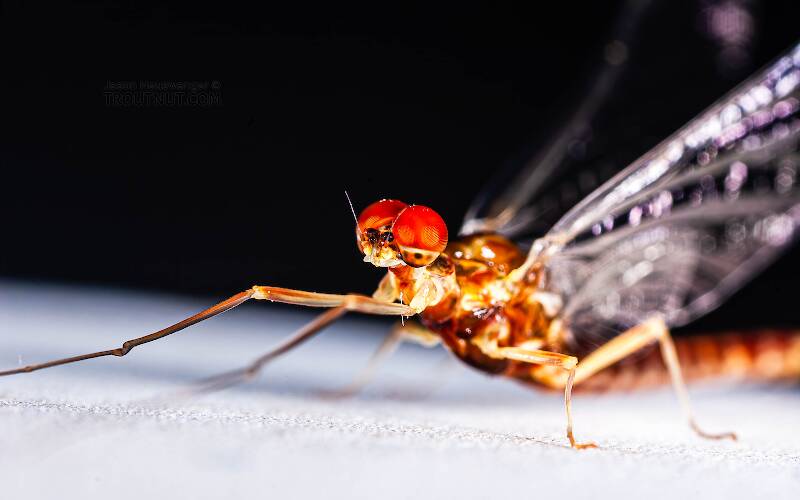
12 Nymphs
1 Streamside Picture of Ephemerella aurivillii Mayflies:
Start a Discussion of Ephemerella aurivillii
References
- Needham, James G., Jay R. Traver, and Yin-Chi Hsu. 1935. The Biology of Mayflies. Comstock Publishing Company, Inc.
Mayfly Species Ephemerella aurivillii
Species Range
Resources
- NatureServe
- Integrated Taxonomic Information System
- Global Biodiversity Information Facility
- Described by Bengtsson (1908)

